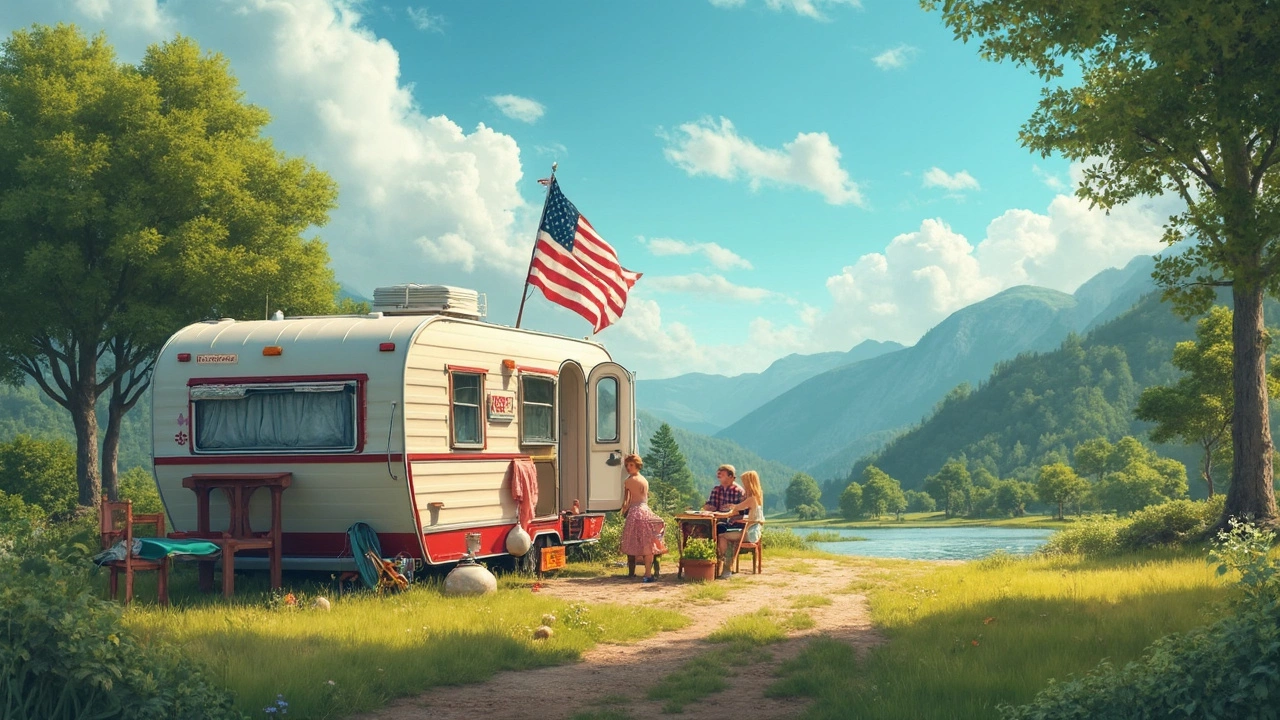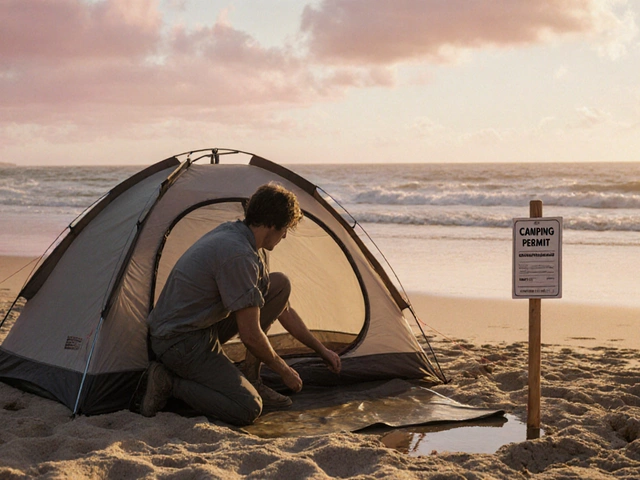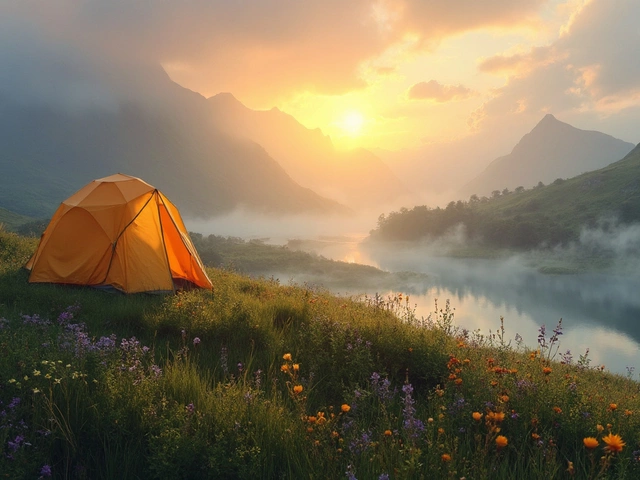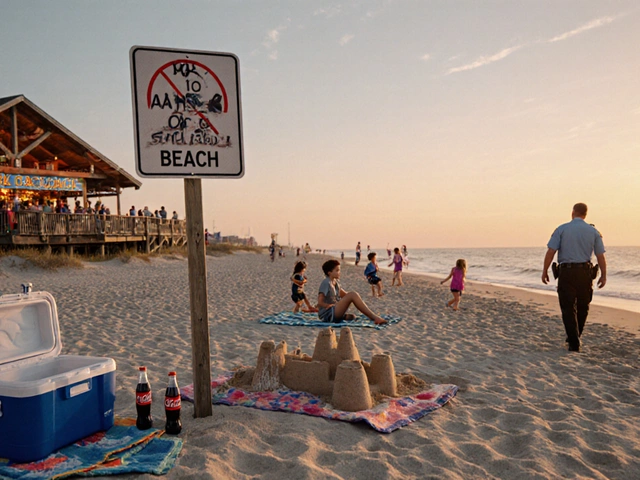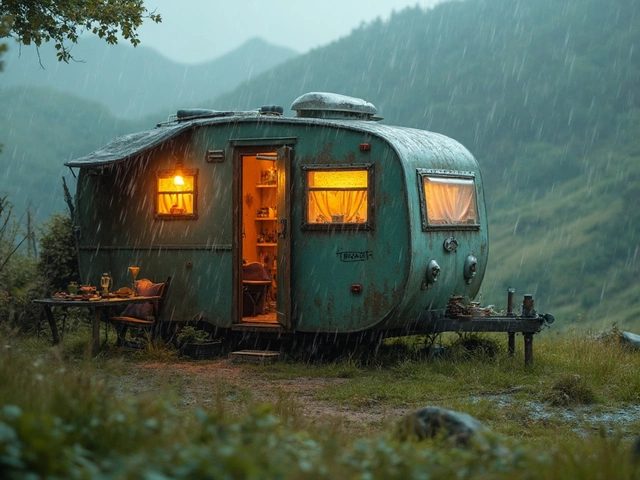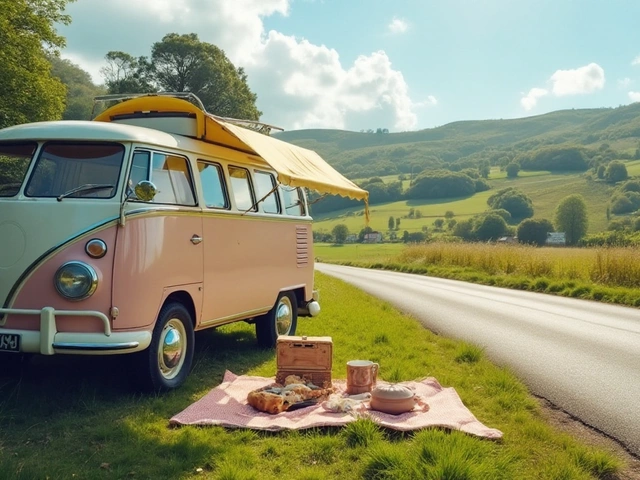Ever heard of 'caravans' in America? If you're thinking of exploring the U.S. roads with a mobile home, there's a little language twist you need to know. In America, what you call a 'caravan' is typically known as a 'RV,' which stands for Recreational Vehicle, or sometimes just a 'trailer.' It's fun lingo but crucial if you're planning a road trip.
So, what's the big difference here? Well, in the United States, 'RV' is really an umbrella term covering various types of motorhomes and towable trailers. You're probably familiar with images of families carting around in something like a house on wheels—yep, that's a motorhome. On the flip side, trailers are usually hitched to a vehicle. Whether big or small, these movable homes on wheels have their charm.
When planning to park these beauties, you'll look for what Americans call 'RV parks' instead of caravan parks. These spots are often equipped with hookups for water, electricity, and sometimes even propane, setting you up just like at home. If you're renting, which many adventurers do, make sure to check out what's available based on comfort, size, and of course, budget.
- American Caravan Terminology
- Types of American RVs
- Exploring Trailer Varieties
- Staying at an RV Park
- Tips for Renting a Trailer
- Understanding U.S. Road Rules
American Caravan Terminology
If you've ever wondered what people in the U.S. call a caravan, you're not alone. The term 'caravan' might instantly conjure images of those iconic travelers heading across Europe, but in the States, you're looking at something a bit different. Here, the term morphs into what we call a RV or 'motorhome,' while a trailer is usually something you tow.
Why the different names? It's all about functionality and tradition. So let's break it down:
- RV (Recreational Vehicle): Encompasses a variety of vehicles from motorhomes, which combine drivable with living space, to towables like fifth wheels and camper trailers.
- Trailer: A more specific type. These can be anything from small campers to larger travel trailers you hitch to the back of your truck or SUV.
How popular is this kind of travel in the U.S.? Well, according to the RV Industry Association, around 11% of American households own some form of a RV or trailer. That's a lot of folks hitting the road with their homes in tow!
While RV might sound broad, it allows people to choose the style that works for them, whether it's a compact trailer for camping or a luxurious motorhome for cross-country adventures. Knowing these terms helps a ton when planning your trip, renting, or visiting U.S. RV parks.
Types of American RVs
If you're just getting into the world of RVs, it can seem like a whole new universe. Let's break it down into bite-sized pieces. American RVs generally fall into a few categories, each with their quirky perks and downsides.
First up, we have motorhomes. These are the big boys, providing a home on wheels. You'll see them zooming down highways, making even the longest road trips comfortable. They're further divided into Classes A, B, and C. Class A is like the king-size version—think of a tour bus with beds. Class B is more like a souped-up van, great for smaller groups or solo adventurers. Class C is the middle ground, offering more size and features without going full bus mode.
Now, not all Americans want to drive their home; some prefer trailers. Travel trailers come in all sorts of sizes, and they're great because you can just drop them at a park and roam around freely in your car. Fifth-wheel trailers are another popular choice. They attach to the bed of a pickup truck and provide a split-level design that offers more space.
For those who crave outdoor experiences, there's the pop-up camper. They’re lightweight, compact, and can be set up in a jiffy, making them ideal for weekend warriors. Trailers like toy haulers even have room to carry, well, toys—ATVs, dirt bikes—making them a favorite for action seekers.
“The best RV is the one that fits your lifestyle and travel needs,” says John Doe, Editor of 'RV Life Magazine'.
| Type | Size (Feet) | Ideal For |
|---|---|---|
| Class A Motorhome | 30-45 | Luxury Travel |
| Class B Motorhome | 18-24 | Solo/Couple |
| Class C Motorhome | 20-31 | Family Travel |
| Travel Trailer | 12-35 | Varied Options |
| Fifth Wheel | 22-40 | Extra Space Needed |
| Pop-up Camper | 8-16 | On-the-Go Camping |
Each type has its own character and suits different types of adventurers. Figure out what matters most to you—be it luxury, mobility, or space—and you'll find your perfect adventure buddy.
Exploring Trailer Varieties
When it comes to trailers in America, there's a whole bunch to choose from. The variety is massive, so understanding your options is pretty important if you're planning a road trip. These trailers, all under the broad category of RVs, cater to different needs and lifestyles.
First up, we've got travel trailers. These are probably the most popular type and come in tons of sizes—from compact options for duo travel to larger ones for family adventures. The beauty is that they hitch right onto your vehicle, which makes them quite versatile. Some models even have slide-outs, which expand the living space once you're parked.
Then there are fifth wheels, known for their distinctive overhang that rests over the back of a pickup truck. They often feel super spacious, and some folks swear by the extra stability they offer due to their unique design. If you've got a heavy-duty truck, these could be your luxury on wheels.
For the adventurous souls, there are toy haulers. These come with a built-in garage space for your dirt bikes or ATVs. The back usually doubles as a ramp, making it easy to load up on fun.
Lastly, some might fancy teardrop trailers. They're lightweight, adorable, and contain just the basics for those looking to camp rather than live out of their trailer. Ideal for folks who want to keep things simple but still have a cozy place to sleep.
Check out the table below to get a sense of the different sizes and average costs:
| Type | Size Range (feet) | Average Cost ($) |
|---|---|---|
| Travel Trailers | 15-40 | 10,000-60,000 |
| Fifth Wheels | 19-41 | 18,000-100,000 |
| Toy Haulers | 20-40 | 35,000-120,000 |
| Teardrop Trailers | 4-20 | 5,000-20,000 |
So there you go, a glimpse into the world of trailers. Whatever style grabs your fancy, the most important thing is to make sure it fits your travel plans and your ride.
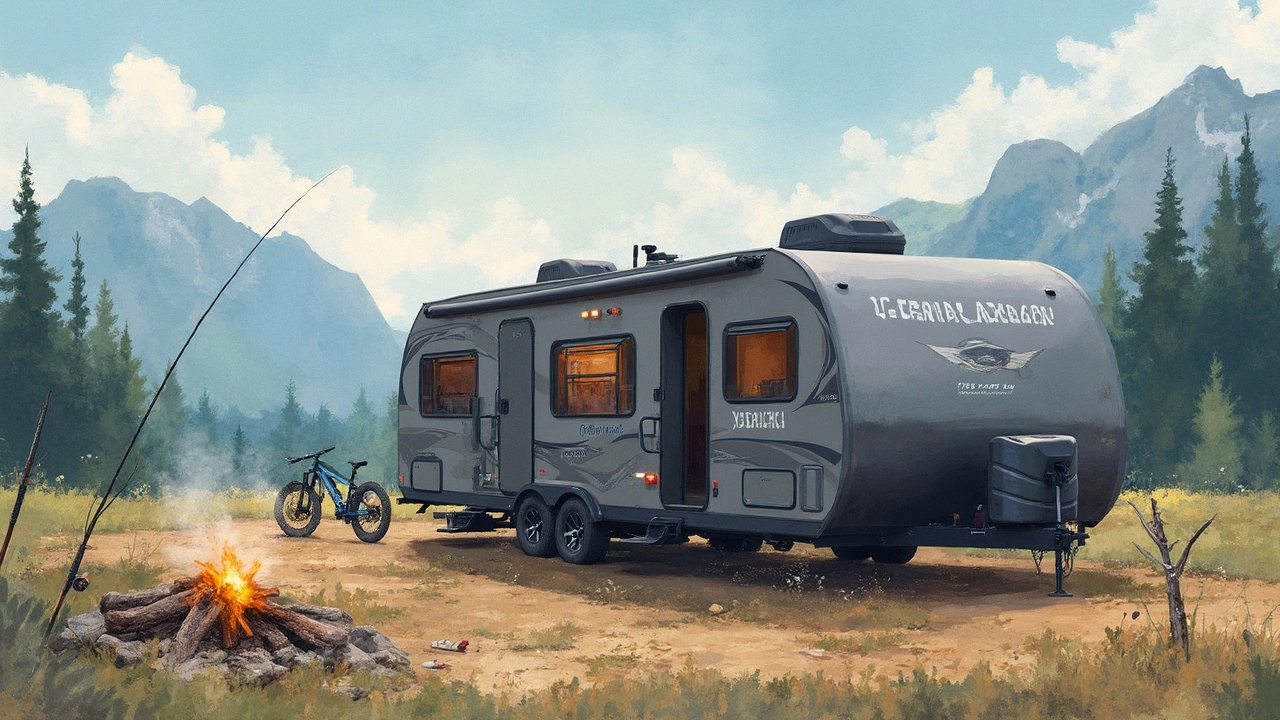
Staying at an RV Park
So, you've got your RV or trailer ready to roll, but where do you park for the night? In America, the answer is an RV park. These spots aren't just fancy parking lots; they're miniature communities, often packed with amenities to make your stay as comfy as possible.
First things first, what should you look for in an RV park? Most parks offer basics like water and electricity hookups, but some go the extra mile with Wi-Fi, laundries, or even swimming pools. A good park will also offer dumping stations to handle waste—an unglamorous but essential detail.
Pro-tip: Reserve your spot ahead of time, especially during peak summer months. RV parks can fill up fast, particularly those near national parks or tourist hot spots.
If you're on a budget, the range of options can be wide. While some luxury parks boast more amenities, there are plenty of options for more budget-conscious travelers. Memberships with organizations like Good Sam can also offer discounts on stays, saving some serious cash over a long trip.
It's also worth mentioning national and state parks as a stellar option. They might not have all the frills, but they make up for it with stunning natural views. Just remember, these sites often require booking well in advance.
Here's a quick checklist before booking an RV park:
- Check the available hookups and amenities.
- Look for pet-friendly options if you're traveling with a fur buddy.
- Scope out the park's proximity to tourist sites or nature spots.
- Review park rules and noise restrictions.
- Consider safety features and staff availability.
Whether you're a seasoned traveler or a first-time roadster, planning your RV park stays can make or break your trip. So, take the time to do a little research, and you'll be staying in style no matter where the road takes you!
Tips for Renting a Trailer
Thinking about hitting the open road? Renting a trailer is a fantastic way to do it without investing in your own right away. But before you dive in, there are a few things you should know to make the experience smooth and enjoyable.
First, decide on the type and size of the RV or trailer you need. This often depends on the number of people traveling and how much space you want. Families typically go for trailers like the larger fifth wheels, while couples might prefer something compact like a teardrop trailer.
Check out rental platforms. There are sites like RVshare and Outdoorsy that work like Airbnb but for RVs. They offer a range of options from private owners, often making the process personal and budget-friendly.
- Read reviews and check ratings of both the trailer and the owner. This can save a lot of headaches.
- Don’t overlook the fine print. Understand the rental agreement details, including insurance coverage and cancellation policies.
- Consider the duration of rental. Some providers offer discounts for long-term rentals, which could drop the per-day cost significantly.
Before hitting the road, double-check what essentials come included. Some rentals throw in things like kitchenware, bedding, and outdoor chairs. Others might not, so you’ll need to pack accordingly to avoid that extra trip to the store.
The weather and travel season can impact availability. In peak summer months, prices might be higher and trailers get booked up quickly, while in the off-season, you often find better deals.
| Season | Cost Variance |
|---|---|
| Summer (Peak) | +20% |
| Winter (Off-Peak) | -15% |
Renting a trailer offers flexibility and freedom, but it requires some planning. Whether you're cruising coastlines or exploring national parks, taking care of these basics can make your road trip legendary.
Understanding U.S. Road Rules
If you're planning to hit the road with your RV (or 'trailer' as some might call it), getting a hang of American road rules is essential. Trust me, it makes the journey smoother and lets you enjoy the ride without worrying too much.
The speed limits can vary widely from state to state, and even within states, depending on the type of road. Most highways have limits between 55 to 75 mph, but always keep your eyes peeled for signs. For larger vehicles like your trailer, sticking to the right lane is a safe bet, especially since you're sharing the road with smaller, faster cars.
Also, don't overlook the importance of seat belts. It's mandatory in all states for the driver and front-seat passengers, and many states require it for rear passengers, too. Speaking of safety, some states have specific rules about using mobile devices while driving—it's always good to be hands-free.
- Right on Red: In most states, you're allowed to turn right at a red light after a complete stop, unless signs tell you otherwise.
- School Zones: Be extra cautious around schools where speed limits drop significantly during opening and closing hours.
- Truck Routes: Look for road signs that direct large vehicles to specific lanes—it's not just about the lanes but also weight restrictions on certain roads.
The open road in the U.S. offers a fantastic view, but always stay updated on where you'll be traveling. Local laws can sometimes have unique quirks. For instance, in California, trailers over a certain weight must carry specific equipment to manage braking efficiently.
